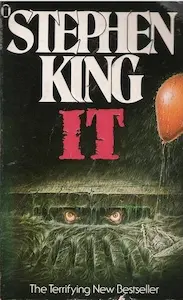It - Summary
Stephen King

Introduction
Stephen King’s novel “It” is a chilling and captivating tale that delves into the depths of fear, friendship, and the power of imagination. Published in 1986, this horror masterpiece has become a classic in the genre, captivating readers with its intricate plot, well-developed characters, and spine-tingling suspense. In this book summary, we will explore the key elements of “It,” including its plot, themes, and notable anecdotes that make it a truly unforgettable read.
The Town of Derry: A Haunting Setting
“It” is primarily set in the fictional town of Derry, Maine, a place plagued by a dark and malevolent force. King masterfully paints a vivid picture of this town, creating an atmosphere of unease and foreboding. Derry becomes a character in itself, with its dark history and hidden secrets that contribute to the overall sense of dread throughout the story.
The Losers’ Club: Unlikely Heroes
At the heart of “It” is the Losers’ Club, a group of seven outcast children who band together to confront the evil that haunts their town. Each member of the club is uniquely developed, with diverse personalities and backgrounds that add depth to the narrative. From Bill Denbrough, the stuttering leader, to Beverly Marsh, the resilient and independent girl, the Losers’ Club forms an unbreakable bond as they face their deepest fears.
Pennywise the Dancing Clown: The Embodiment of Fear
The primary antagonist of “It” is Pennywise the Dancing Clown, a shape-shifting entity that preys on the fears of its victims. Pennywise is a terrifying embodiment of fear, lurking in the shadows and manipulating its victims’ minds. King’s masterful descriptions of Pennywise’s haunting appearances and sinister actions create a sense of terror that lingers long after the book is closed.
The Power of Childhood: Themes of Innocence and Imagination
One of the central themes in “It” is the power of childhood and the loss of innocence. King expertly explores the vulnerability and resilience of children, showcasing how their imagination and belief in the extraordinary can help them overcome even the most terrifying of obstacles. Through the Losers’ Club, King emphasizes the importance of friendship and unity in the face of adversity.
The Interplay of Past and Present: A Dual Narrative
“It” skillfully weaves together two timelines, alternating between the characters’ childhood experiences in the 1950s and their adult lives in the 1980s. This dual narrative adds depth and complexity to the story, allowing readers to understand the long-lasting impact of their childhood traumas. King seamlessly transitions between the past and present, building suspense and revealing crucial details that connect the two timelines.
Anecdote: The Haunted House on Neibolt Street
One of the most memorable and chilling moments in “It” occurs when the Losers’ Club ventures into the abandoned house on Neibolt Street. This dilapidated house serves as a physical manifestation of their fears, with each room presenting a unique and horrifying challenge. King’s vivid descriptions and the characters’ harrowing experiences within the house create an intense and unforgettable scene.
Overcoming Personal Demons: Individual Journeys
As the Losers’ Club confronts Pennywise, they must also confront their own personal demons. Each character faces their deepest fears, whether it be a traumatic childhood experience, an abusive parent, or a struggle with self-acceptance. King’s exploration of these individual journeys adds emotional depth to the story, making it more than just a tale of supernatural horror.
Anecdote: The Blood Oath
To solidify their bond and commitment to defeating Pennywise, the Losers’ Club performs a blood oath. This powerful and symbolic act showcases their unwavering dedication to each other and their shared mission. It becomes a pivotal moment in the story, highlighting the strength of their friendship and their determination to face their fears head-on.
The Final Battle: Confronting the Ultimate Evil
As the story reaches its climax, the Losers’ Club faces a final showdown with Pennywise. King masterfully builds tension and suspense, keeping readers on the edge of their seats as the battle between good and evil unfolds. The final confrontation is both thrilling and cathartic, providing a satisfying conclusion to the story.
Anecdote: The Power of Belief
Throughout “It,” the power of belief is a recurring theme. The Losers’ Club discovers that their belief in themselves and their ability to overcome their fears is a potent weapon against Pennywise. King emphasizes the importance of hope and resilience, showing that even in the face of unimaginable horror, the strength of the human spirit can triumph.
Conclusion
Stephen King’s “It” is a masterpiece of horror literature that combines elements of fear, friendship, and the power of imagination. Through its haunting setting, well-developed characters, and expertly crafted plot, King creates a truly immersive and unforgettable reading experience. “It” reminds us of the importance of facing our fears, the strength of friendship, and the resilience of the human spirit. This chilling tale will continue to captivate readers for generations to come.